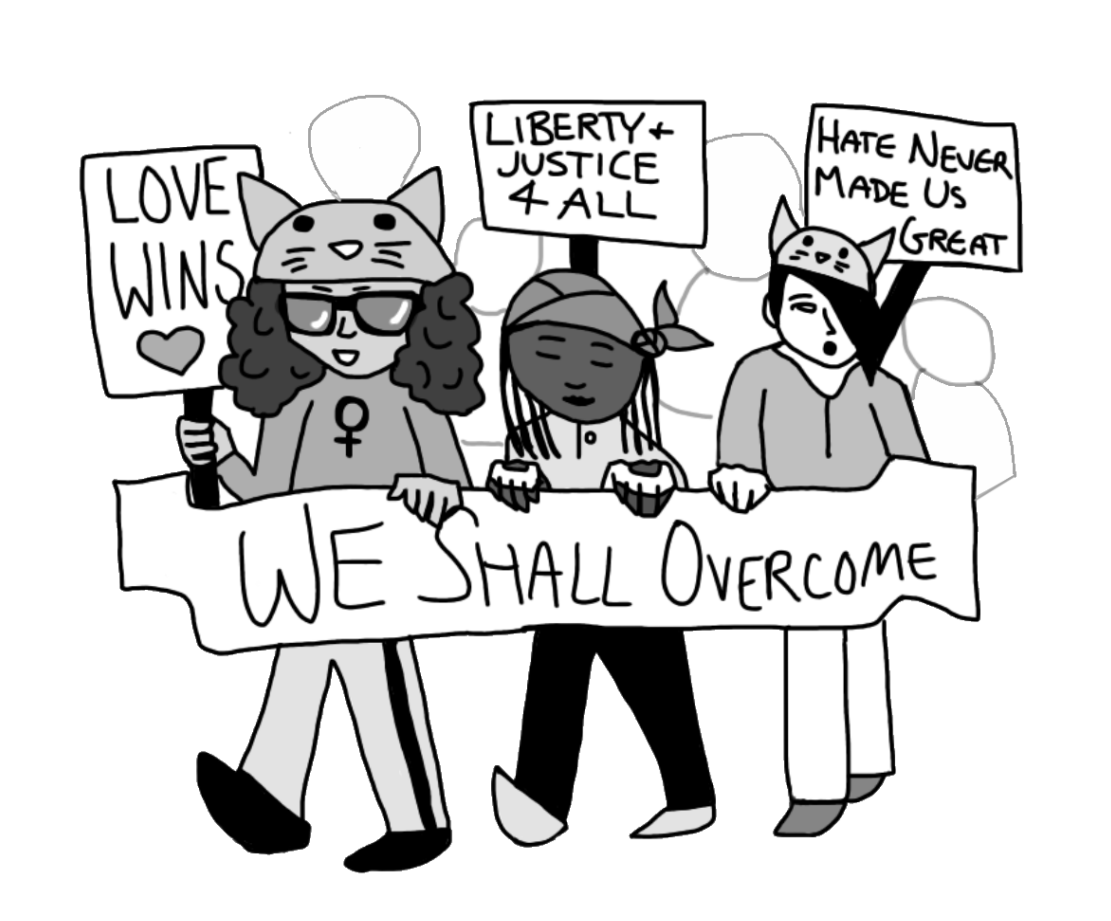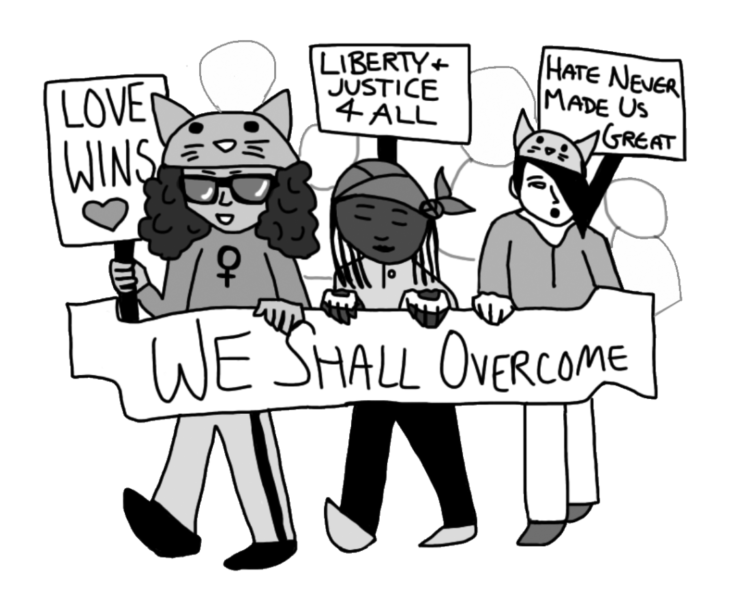
Social activism — especially in the form of protests — can be a loud, public and powerful way to get a point across. But what effect does it have on a nation’s political discourse?
Activist and alumna Angela Solis attended the D.C. Women’s March, which was conducted in order to inspire a widespread campaign of activism centered around reproductive rights, civil rights and immigration to counter President Trump.
While the protest didn’t end Trump’s presidency or prevent him from undoing progressive legislation, it was successful in catalyzing widespread discussion on these issues.
“I don’t think the Women’s March was necessarily for a specific type of change, as much as it was to make itself present,” Solis said. “As a woman, specifically, I felt really happy to be there. This third wave of feminism that is more about defining the definition of a woman, it was really cool to see that kind of rhetoric being included as well.”
Immediately after the march, numerous organizations worked to harness the empowerment it engendered in order to encourage women to run for elected office.
Emily’s List, an organization that encourages Democratic pro-choice women to run for office, encouraged women, “Don’t just march, run,” and the day after the march, a training session for 500 women was held.
In another instance, Atlantic County, New Jersey official John Carman was defeated in November by Ashley Bennett, who was motivated to run against him when she saw that he had posted a meme mocking the Women’s March.
Millions of women uniting for a common cause did not end with the Women’s March, though. Starting as a reaction to the sexual harassment and assault allegations against Harvey Weinstein, the “#metoo” movement encourages people to confront perpetrators and share their stories of mistreatment.

This form of activism, of calling out serial sexual harassers and predators, has created what The New York Times dubs the “Weinstein effect,” or the phenomenon of which sexual assault allegations are publicized, triggering responses from the community and often damaging the reputations and careers of the accused.
But activism isn’t always effective. Sometimes protests, despite their conspicuousness, fail even to draw an adequate response.
Activist and alumna Samantha Soon provides an example of ineffective activism in which leftist organizations at her school were unable to effectively convince her administration to counter white supremacist propaganda.
“I don’t think that any of the protests I’ve been to really have enacted systemic change,” she said. “They’ve been a good outlet for immediate anger, but I don’t think they have catalyzed long-term change.”
Nevertheless, protests are empowering and exciting to the protesters, regardless of whether there was meaningful change or not.
“[The Women’s March] was really empowering,” Solis said. “Just to feel that energy and that excitement, and that hope that we felt. A lot of people in my community felt very downtrodden after the election, and having that community of people who you know is fighting for the people who are oppressed in a certain system, it was really special.”
As has been the case in many recent protests, passions can run dangerously high. Soon describes a New York protest she participated in, where protesters blocked traffic and tried to light Trump Tower on fire.
“Oftentimes, people don’t consider that emergency responders are being blocked when protesters are blocking traffic,” she said. “This needs to be accounted for, but I guess in the case of the protesters who were trying to light the building on fire, I guess that’s just a kind of anger that I don’t really understand myself. I think their anger is valid, but I don’t think their actions are valid.”
Protests’ ability to incite emotional responses is undeniable. Often, this can play to their advantage by jolting people to action — such as in the case of the Women’s March — but can also create further polarization. Solis believes that organizations such as Black Lives Matter should not shy away from spreading their message, even if it may be seen as divisive.
“There has to be an understanding of both sides in order to come to some sort of conversation,” Solis said. “I think that is something that we need to work on as a society in making sure that, as we’re seeing this segmentation of society, whatever the causes that might be, we need to start making much more conversation.”




